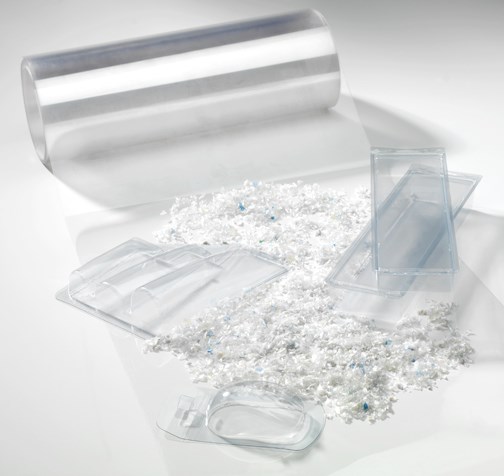SPI and ACC partner on rigid plastics packaging, thermoforming
Can polyethylene terephthalate (PET) thermoforms enjoy the same recycling rates as their bottle brethren? Increasing thermoformed packaging reclaim, and that of other rigid plastics, will likely just be one goal of a new collaboration between SPI and ACC.

Can polyethylene terephthalate (PET) thermoforms enjoy the same recycling rates as their bottle brethren? Increasing thermoformed packaging reclaim, and that of other rigid plastics, will likely just be one goal of a new collaboration between SPI: The Plastics Industry Trade Association and the American Chemistry Council’s (ACC) Plastics Division. Variations on the word “recycling” occurred seven times in the one-page/577-word release.
On Dec. 11, the trade groups announced they will “align the initiatives and programs of ACC’s Rigid Plastics Packaging Group (RPPG) with the resources and membership of SPI’s Thermoformers Committee.”
In practice, Dan Mohs, chief executive officer at thermoformer Placon Corp., who was a past member of RPPG and currently chairs the SPI Thermoformers Committee, stated that SPI will form a Rigid Plastics Division (RPD) that will include two subgroups.
The RPPG will merge with the SPI Thermoformers Committee, creating one of those subgroups, which will focus on packaging, while Transportation and Industrial Rigid Plastics comprise the other subgroup. The new structure will be on display at a Rigid Plastics Packaging Conference, which is planned for this spring, Mohs said.
NAPCOR, the National Assn. for PET Container Resources, reported that in 2012, the U.S. and Canada recycled 47.8 million lbs of PET thermoforms. When exports and other claims are added in, the result was a modest increase over 2011’s reported recovery of 45 million lbs.
PET had an overall recycling rate of 30.8% in 2022, with a record 1.718 billion lbs of post-consumer bottles collected, according to NAPCOR’s annual report. NAPCOR noted that work remains to be done to better collect PET thermoforms, however. That number is 36 times the amount of PET thermoforms recycled, per NAPCOR, but of course, despite growth in PET thermoforming, at the expense of polystyrene and polyvinyl chloride, bottle remain the dominant output market for the material.
Since 2009, the group has pushed the “removal of obstacles to PET thermoform recycling” noting the initiative is a “top priority…not only as a reflection of proper stewardship for PET’s fastest growing packaging segment, but as a way of increasing feedstock opportunities for reclaimers.”
That feedstock is needed as investment in postconsumer PET recycling capacity, some $75 million in 2012, has created a yawning collection/capacity gap:
The U.S. now has capacity to process significantly more postconsumer PET packaging, both bottles and thermoforms, than is actually collected. In 2013, even if no PET bales are exported, demand by domestic PET reclaimers for recycled material will outstrip supply of collected PET.
An issue the ACC and SPI can now address together.
Related Content
-
Breaking the Barrier: An Emerging Force in 9-Layer Film Packaging
Hamilton Plastics taps into its 30-plus years of know-how in high-barrier films by bringing novel, custom-engineered, nine-layer structures resulting from the investment in two new lines.
-
Measuring Multilayer Plastic Containers Made Easier With Today's Ultrasonic Gauges
Ultrasonic gauge technology has evolved to simplify measurement of very thin layers in plastic containers. Today’s gauges with high-frequency capabilities and specialized software can make multilayer container measurement quick and easy for ordinary users.
-
Multilayer Solutions to Challenges in Blow Molding with PCR
For extrusion blow molders, challenges of price and availability of postconsumer recycled resins can be addressed with a variety of multilayer technologies, which also offer solutions to issues with color, processability, mechanical properties and chemical migration in PCR materials.








